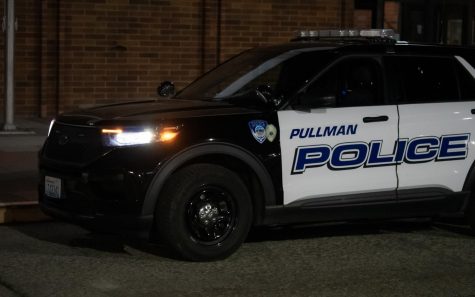The more you know: your period products
March 4, 2016
Let’s say the average woman starts her period at age 13 and has a four-day period once a month until she turns 50. This would mean that rain, sleet, snow or hail, Mother Nature delivers (with a cramp-induced wail) on more than 1,700 days of the average woman’s life.
The total overall lifetime cost is $18,171, including heating pads, acne medication, panty liners, Midol, tampons, new underwear to replace stained pairs, birth control and chocolate. Women will spend approximately $1,773.33 specifically on tampons throughout their lifetime, according to an article published by The Huffington Post.
Women in 45 states also pay a “tampon tax” according to an article published by The Washington Post. The article mentioned the tax is applied because tampons are considered a luxury item, not a necessity.
{{tncms-asset app=”editorial” id=”ebf1450a-ebaa-11e5-a67e-57391f947527″}}
For females in Pullman the main suppliers of tampons, pads and other menstrual items specifically include Wal-Mart, Shopko or online sources such as amazon.
At the Pullman Wal-Mart’s a box of “Tampax Pearl Plastic Regular Absorbency Unscented Tampons 18 Count” costs $3.97. The same box at Shopko costs $5.49 online and on Amazon they are $8.37.
Wal-Mart also offers tampons ranging in absorbencies from light to super and super plus. For the brand Playtex, all absorbencies cost the same, $6.97, however for super and super plus the amount of tampons per box drops from 40 to 36.
Another option for women is pads, which come in different lengths and absorbencies. The brand Equate has a 48 count box of super pads for $3.76, the brand Stayfree is priced at $4.97, and U by Kotex has a 44 count box for $5.64.
An online company called “Thinx” sells period underwear that can hold up to two tampons worth of blood, according to their website. They come in different styles including hip hugger, boy short and thongs. The prices range from $24-$34.
According to Pam Spens, a nurse practitioner in the Women’s Clinic at Health and Wellness, reusable period panties are new in the U.S., and currently becoming popular.
“They seem promising, but only time will tell” said Spens.
Victoria Braun, the emotional health coordinator at Health and Wellness, said reusable menstrual products are more environmentally friendly, but it comes down to personal preference.
Menstrual cups are one reusable option. They are often made of silicone and should be changed about every 12 hours. There are different sizes available and different folding techniques used to insert them. Some common brands are The Diva Cup, Mooncup, and Softcup. Most company websites have guidelines to use the product correctly.
Spens says that pads are the safest, as tampon and cups can introduce and harbor bacteria and left in too long and can lead to toxic syndrome.




















